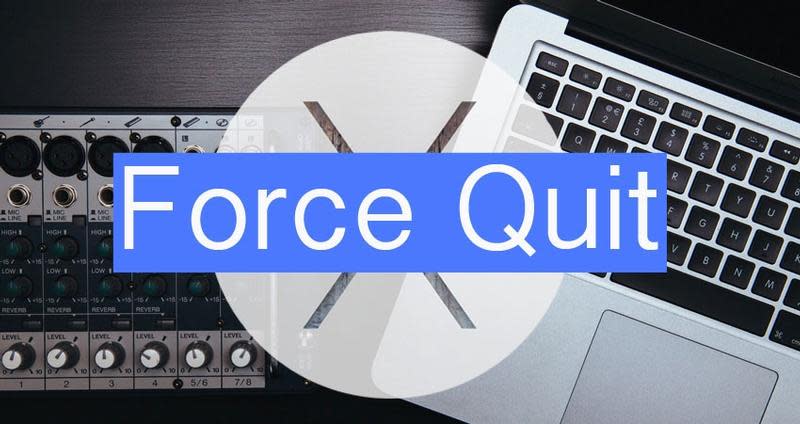Step by step guidelines on Force-Quitting Mac App

The OS X Yosemite users often complain about are disturbing apps such as Safari which eats up their system resource, leading to a sloth OS. The worst bit is that these apps don't quit in a normal way and in such situations you have to follow a force-quit procedure. You will be glad to know that OS X apps can be force quit on mac devices through handy force-quitting shortcuts from Apple. The post below offers three simple methods on force-quitting Mac app.
If the app is unresponsive or not responding or has got monopolized system-resources, the user can take to Force Quit solution offered by OS X to close it by force. The process will remove the app from memory easily.
Method 1:
Force quitting Mac app with Dock
First Step:
Locate your unresponsive application in Dock & right-click on the icon.
Second step:
Contextual menu would pop up & you will simply have to opt for the Force Quit option for closing the disturbing the app.
Method 2
Force quitting Mac app with Finder
First step:
Go for Force Quit program in Apple menu of the Finder.
Second step:
Select your unresponsive application in Force Quit program window & just click on Force Quit.
Method 3
Force quitting Mac app with keyboard shortcuts
First step:
Press on (⌥)-Command & Esc on your keyboard to open up Force Quit program window. You can also do it by pressing Ctrl-Alt-Delete together.
Second step:
Now, select the disturbing app in Force Quit program window & just click on Force Quit tab in blue to complete the process.
N.B.- In case that app quits, the user can further reopen it easily just by clicking on Reopen option in the popped up dialog box.
It's to stress here that Apple has warned that one should not opt for the Force Quit option unless an app can't be closed normally.
Important tips to remember:
In case the offending app freezes down upon reopening & force-quitting is not working – there are some additional tips which might be useful to solve the problem.
Restart the Mac
At times, force-quitting the offending app would not release the system resources as desired and you might have to re-start your machine.
RTFW
You have to go through the documentation text accompanying the misbehaving app to check whether it is friendly with your OS X version or not. The documentation can also enlighten you regarding some known issues that you must know to understand the app further.
Open up another file
Sometimes, the file you are looking to open might cause issues for the app. In case, there is some problem with your original file, quickly try your luck with another one.
Check out the updates
Go to App Store through Mac Menu on Finder & click on Updates tab. Check whether there is any major update for your apps or OS X. In case, the offending app was taken from outside (not the Mac's App Store), go to the app developer's site for the updates.
Double-check plug-ins
You must know that some of the apps come with kernel extensions which might lead to an offending behavior from the app. If that's the case with your app, you have to uninstall the concerned plug-ins.
Disconnect external devices
Sometimes incompatible peripheral or external devices like USB thumb or printer or some external storage device might lead to offending reaction from apps. If, that's the case with you, you have to disconnect these devices from your Mac.
Apple Hardware Test or Apple Diagnostics
Run these tools to check whether there's any issue with the Mac's storage, memory or any other hardware options.
Hope these tips would help to have a happy experience with Mc apps.
